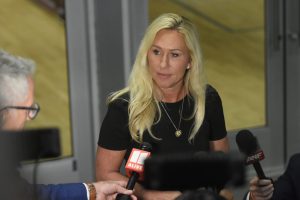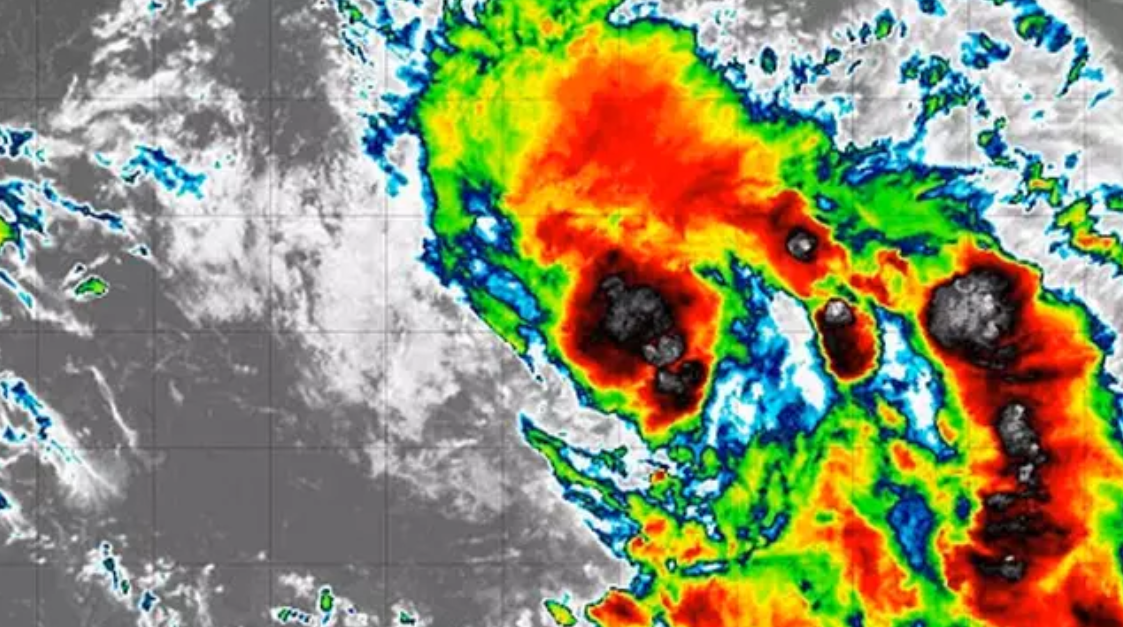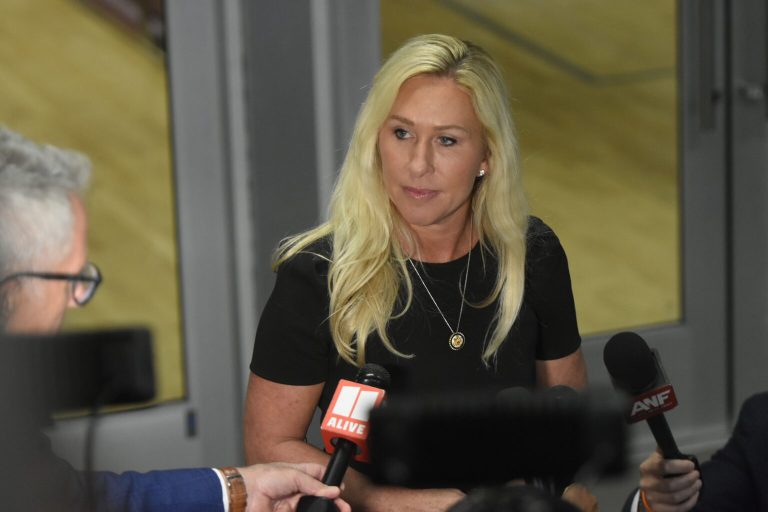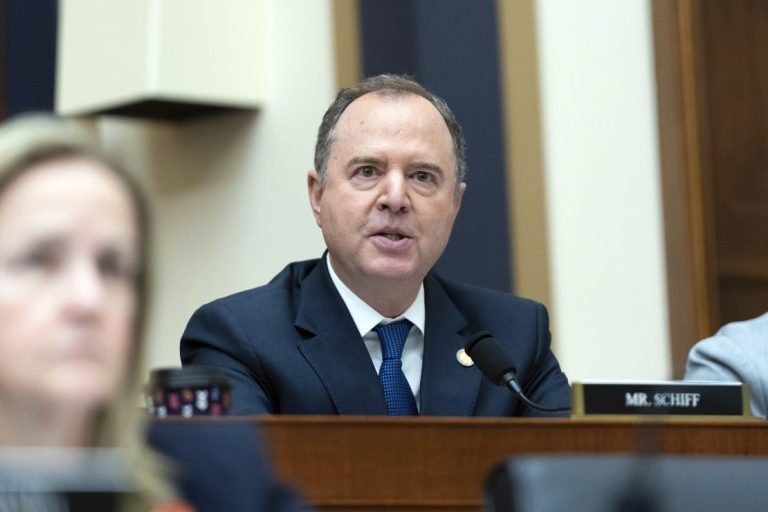Two massive storms swirling in the Atlantic could soon begin interacting with each other in a rare and potentially dangerous phenomenon known as the Fujiwhara Effect — and meteorologists are warning residents across the East Coast to stay alert.
While this year’s Atlantic hurricane season has been relatively quiet compared to some recent years, with only seven named storms up until late September, things have rapidly escalated. Within the span of just a few days, the basin has produced new systems, including Tropical Storm Humberto and the developing Invest 94L, both of which could soon reach hurricane strength.
And if the two storms get close enough, experts warn, they could begin a strange “dance” around one another — a dangerous atmospheric ballet that could lead to stronger, more unpredictable storms threatening the US coastline.
What Is the Fujiwhara Effect?
Named after Japanese meteorologist Sakuhei Fujiwhara, who first described it in 1921, the Fujiwhara Effect occurs when two cyclones spin close enough together that they begin orbiting a shared center point.
According to the National Weather Service, if one storm is significantly stronger than the other, the weaker system may get pulled into the stronger storm’s circulation and be absorbed entirely.
If the storms are closer in strength, however, they can orbit each other in a kind of atmospheric waltz, spinning around a common axis for days. In rare cases, they may even merge into one much larger storm — a nightmare scenario for forecasters and coastal communities alike.
The threshold for this interaction is usually when the two cyclones come within about 900 miles of each other. Once inside that radius, the tug-of-war of atmospheric forces can begin.
Past Examples of Storms Colliding
Although rare, the Fujiwhara Effect has been observed multiple times in recent decades.
-
In 2017, Hurricanes Hilary and Irwin in the Eastern Pacific came together in a Fujiwhara interaction, spinning around one another before weakening.
-
In 1995, Hurricanes Luis and Marilyn in the Atlantic also interacted, creating forecasting headaches for the National Hurricane Center.
-
In the Western Pacific, where typhoons are more common, the phenomenon has been seen more frequently, sometimes with devastating results.
Dr. Michael Lowry, a hurricane specialist with WPLG-TV, noted: “When two storms begin that dance, you not only have to track one unpredictable path — you suddenly have to track two, and both become harder to forecast.”
The Current Situation in the Atlantic
At the moment, two systems are raising concern among meteorologists:
-
Tropical Storm Humberto – Recently named, Humberto is expected to track a curved path between Bermuda and the East Coast of the United States. Forecasters warn it could strengthen as it encounters warm Atlantic waters.
-
Invest 94L – Currently being monitored by the National Hurricane Center, Invest 94L is projected to organize further and will likely be named Storm Imelda once it reaches tropical storm strength. Its trajectory could bring it dangerously close to Humberto.
If both storms continue strengthening and drift into proximity, the Fujiwhara Effect could begin sometime this week.
Who Could Be Impacted?
Meteorologists are urging vigilance from Florida all the way to the Mid-Atlantic states.
FOX Weather’s Bryan Norcross explained:
“There are too many imaginable scenarios to enumerate, but the bottom line is that everyone in the Bahamas and along the East Coast should plan to stay informed this weekend.”
Even if the Fujiwhara Effect doesn’t fully develop, the storms could still dump heavy rainfall, cause coastal flooding, and create life-threatening rip currents stretching along thousands of miles of shoreline.
And if the storms do interact more strongly, the consequences could be far more severe.
The Science Behind the Dance
The Fujiwhara Effect is a striking example of fluid dynamics in action. Tropical cyclones are essentially massive rotating heat engines, fueled by warm ocean water and guided by atmospheric steering currents.
When two storms form close enough, their rotations interact, much like two spinning tops placed near each other on a table. The cyclonic winds cause each system to tug at the other, setting up a rotating “binary” motion.
-
If the storms are mismatched in size and intensity, the larger storm tends to dominate, pulling the smaller one into its orbit.
-
If they’re similar in strength, they may orbit around a common midpoint — often moving erratically and confusing computer models.
-
In very rare cases, two storms of comparable strength can merge into a single, much larger storm, dramatically increasing destructive potential.
Dr. Matthew Rosencrans, lead hurricane forecaster at NOAA, explained:
“The Fujiwhara Effect doesn’t always mean disaster. Sometimes storms dance briefly and then go their separate ways. But when it happens close to land, it can make forecasting extremely challenging and risks much harder to predict.”
Why 2025’s Hurricane Season Is Different
The 2025 Atlantic hurricane season has been unusual so far. After a relatively quiet start, activity has picked up rapidly in September, coinciding with peak hurricane season.
Meteorologists point to a combination of warmer-than-average sea surface temperatures in the Atlantic and shifts in atmospheric patterns tied to climate variability.
Warm waters provide the fuel that hurricanes need to intensify. With ocean heat content running well above normal in parts of the Atlantic basin, storms have more energy available.
That’s why experts warn that even systems that initially look weak — like Invest 94L — can rapidly intensify under the right conditions.
Preparing for the Worst
Authorities stress that now is the time for residents along the East Coast and in the Bahamas to prepare emergency kits, review evacuation routes, and stay closely tuned to local forecasts.
Even without a direct landfall, the combination of two strong storms interacting could cause:
-
Widespread coastal flooding from storm surge.
-
Heavy rainfall leading to inland flash floods.
-
High winds capable of damaging property and infrastructure.
-
Life-threatening rip currents and dangerous surf along beaches.
The Federal Emergency Management Agency (FEMA) advises all residents in hurricane-prone areas to have at least a three-day supply of food, water, and medication, along with flashlights, batteries, and a plan for communication if power is lost.
The Bigger Picture
The Fujiwhara Effect is a reminder of just how complex and unpredictable our climate system can be. While meteorologists have advanced tools and computer models, the interactions between multiple storms often introduce chaos into forecasts.
Some climate scientists also warn that as oceans continue to warm due to global climate change, the likelihood of multiple simultaneous storms may increase, raising the odds of Fujiwhara events in the future.
Dr. Jennifer Collins, a professor of atmospheric science at the University of South Florida, notes:
“We can’t say the Fujiwhara Effect itself is becoming more common, but the conditions that allow it — multiple strong storms occurring at the same time — are something we expect to see more of in a warming world.”
Looking Ahead
As of now, forecasters emphasize that it’s too early to say for certain whether Humberto and Invest 94L will collide. Much depends on the exact track of each storm over the coming days.
Still, the possibility has drawn widespread attention online, with weather enthusiasts and coastal residents anxiously watching satellite maps.
For many, the idea of two massive hurricanes colliding sounds like something out of a disaster movie. But for meteorologists, it’s a rare and fascinating — if dangerous — real-world event.
The message from experts remains clear: stay prepared, stay alert, and don’t underestimate the power of nature when storms start to dance.

Emily Johnson is a critically acclaimed essayist and novelist known for her thought-provoking works centered on feminism, women’s rights, and modern relationships. Born and raised in Portland, Oregon, Emily grew up with a deep love of books, often spending her afternoons at her local library. She went on to study literature and gender studies at UCLA, where she became deeply involved in activism and began publishing essays in campus journals. Her debut essay collection, Voices Unbound, struck a chord with readers nationwide for its fearless exploration of gender dynamics, identity, and the challenges faced by women in contemporary society. Emily later transitioned into fiction, writing novels that balance compelling storytelling with social commentary. Her protagonists are often strong, multidimensional women navigating love, ambition, and the struggles of everyday life, making her a favorite among readers who crave authentic, relatable narratives. Critics praise her ability to merge personal intimacy with universal themes. Off the page, Emily is an advocate for women in publishing, leading workshops that encourage young female writers to embrace their voices. She lives in Seattle with her partner and two rescue cats, where she continues to write, teach, and inspire a new generation of storytellers.









